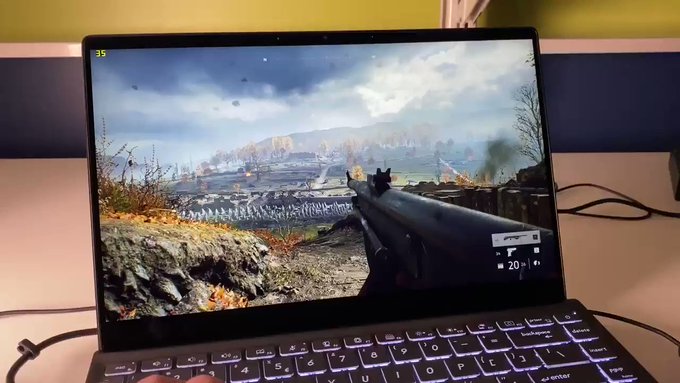Intel Tiger Lake laptop runs Battlefield V impressively well – without needing a dedicated graphics card

Intel has given us a glimpse of Battlefield V running using integrated Xe graphics, on a thin-and-light laptop powered by one of the firm’s incoming Tiger Lake mobile chips.
Ryan Shrout, who is Chief Performance Strategist at Intel, shared some video footage on Twitter, which you’ll want to check out.
Perks of the job! Took a prototype Tiger Lake system for a spin on Battlefield V to stretch its legs. Impressive thin and light gaming perf with Xe graphics! Early drivers/sw, but it’s the first time I’ve seen this game run like this on integrated gfx. More later this year!
253 people are talking about this
So, as we can see from the clip, Shrout is playing Battlefield V at 1080p (Full HD) resolution at high quality graphics settings (DX11), and the game is running smoothly enough, ticking over at around the 30 frames per second mark (commonly regarded as the baseline for a palatable frame-rate).
Of course, what we have to remember is that this is a prototype laptop with a Tiger Lake chip. So, remember that the final product may well be better in terms of elements like cooling, and indeed the performance of the integrated Xe graphics will benefit from further driver tuning and so forth (as Shrout mentions, these are early drivers).
In other words, we can expect even better results when notebooks with Tiger Lake 11th-gen CPUs are actually out.
Ryzen rivalry
Interestingly, Matthew Connatser, editor of AdoredTV (the source of quite a few hardware rumors) chimed in on the Twitter thread, saying he had tested Battlefield V with those same settings using the Ryzen 9 4900HS with Vega 8 integrated graphics, and the AMD chip hit around 25 frames per second. So the Intel Tiger Lake CPU is about 20% faster, before any driver or other relevant optimizations going forward.
In short, this is a promising peek at future laptop performance levels courtesy of Tiger Lake, with notebooks using these processors expected to land at the end of 2020 (and a lot of them – some 50 models, according to Intel).



Comments
Post a Comment